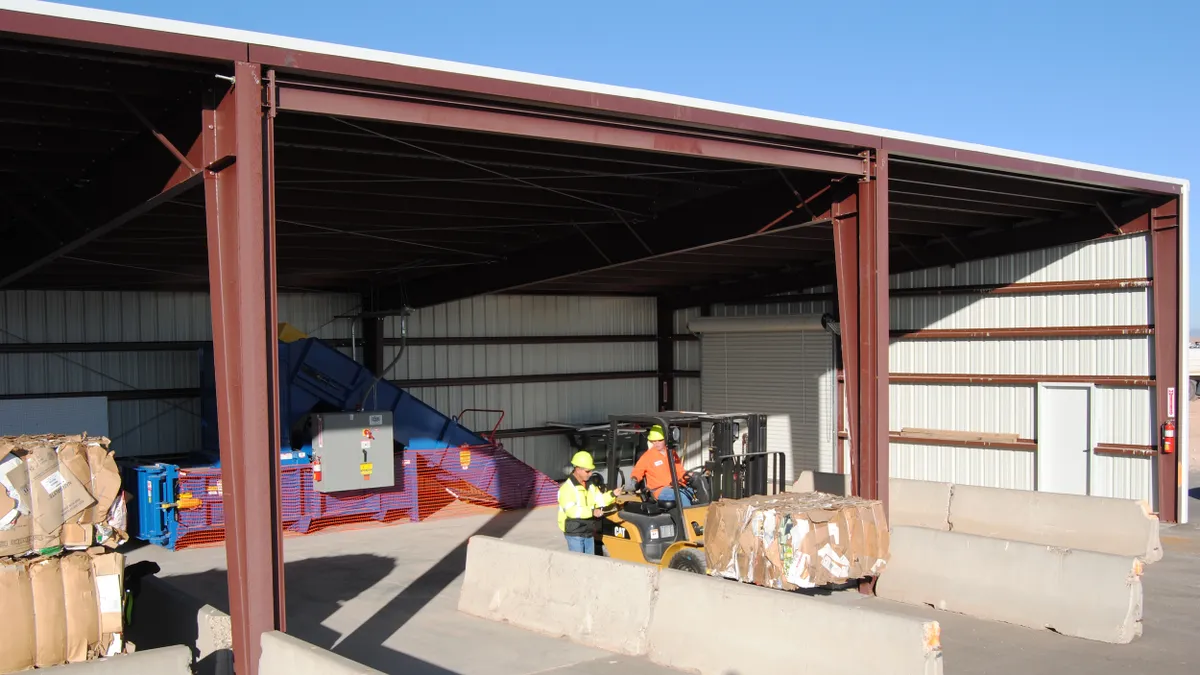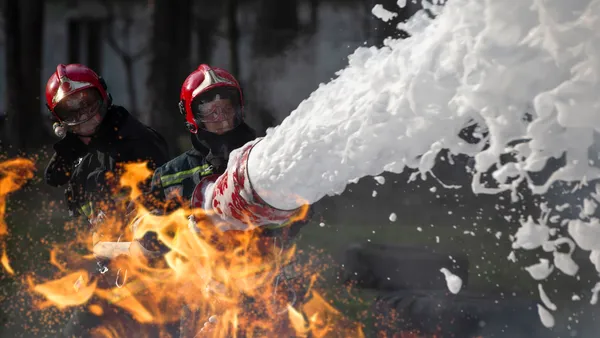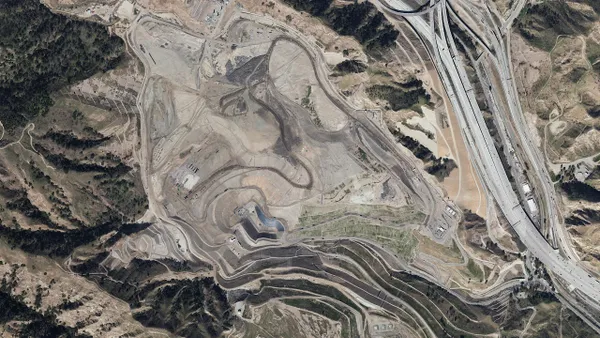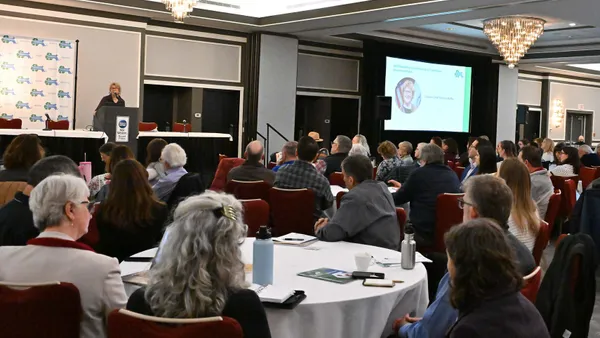Dive Brief:
- The discharge of leachate containing toxic chemicals into Lake Superior is under fire from a group of Minnesota county commissioners. Four out of seven St. Louis County commissioners signed on to a May 12 letter sent to the U.S. EPA and the Minnesota Pollution Control Agency (MPCA) requesting "immediate action."
- The letter states the city of Duluth — through the Western Lake Superior Sanitary District (WLSSD) — is discharging 5 million gallons of MSW leachate into Lake Superior. Surface water discharge shows per- and polyfluoroalkyl substances (PFAS), along with mercury, arsenic, lead, cyanide, and others. WLSSD has said it uses physical, chemical, and biological treatments to remove around 95% of regulated contaminants.
- WLSSD declined to provide a comment to Waste Dive until a pending MPCA letter is released. Executive Director Marianne Bohren told the Duluth News Tribune her organization felt blindsided by the letter, while confirming the 5 million gallon figure and acknowledging the entity does not test for PFAS. Commissioner Keith Nelson, one of the letter's signatories and chair of the county's solid waste commission, told Waste Dive he and other officials have been in communication with WLSSD for years about such issues, with little movement. WLSSD disputes this characterization.
Dive Insight:
The issue marks another instance where concern over PFAS associated with landfills could spark some level of involvement from federal agencies. PFAS contamination is among the most controversial emerging topics facing the waste industry, with direct implications for disposal facilities and wastewater treatment plants.
WLSSD takes in leachate hauled or piped in from landfills — both capped and active — across Northeastern Minnesota. Per the May 12 letter, the WLSSD discharge site is 10.5 miles upstream from the Lakewood pump house, which supplies Duluth's drinking water.
An estimated 0.04% of the material WLSSD receives is leachate. Overall, WLSSD discharges around 13.9 billion gallons of effluent on an annual basis. According to the letter, the leachate is then “diluted by millions of gallons of wastewater from the city’s sewers and storm sewer systems." WLSSD says it does not accept wastewater from the city's storm sewer systems. WLSSD maintains all of its processes follow EPA and Minnesota standards.
Nelson highlighted PFAS as a specific source of concern among worries about the wider array of potential toxins in leachate. He referenced ongoing studies and coverage about PFAS, which have been linked by researchers to cancer and other illnesses.
"When something is showing up in the bloodstreams of children, it's time to do things about that," Nelson said.
Speaking more broadly, Nelson also pointed to other "closed loop system" alternatives for leachate he believes could be preferable. For example, the county owns and operates a landfill based in the city of Virginia that sprays its leachate onto neighboring land. Nelson said those fields produce hay, which the county then uses as landfill cover. He said the area has been seeking to build a second landfill and is considering further alternatives to current arrangements.
An unidentified spokesperson for the EPA's Region 5 office told Waste Dive the agency has received the letter and is "consulting the appropriate state and local agencies."
Darin Broton, director of communications for MPCA, similarly told Waste Dive the agency has received the letter and plans to review the issues raised with WLSSD, the city of Duluth, and St. Louis County.
"[MPCA] appreciates the issues raised by the St. Louis County Board and looks forward to discussing these in more detail," said Broton in a statement.
WLSSD told the News Tribune it does not have data on how many parts per trillion of PFAS (a commonly used EPA metric) are being discharged into Lake Superior. Despite mounting public pressure, the EPA does not regulate PFAS and only has a drinking water advisory for two types of PFAS — PFOA and PFOS — of 70 parts per trillion. However, WLSSD previously banned PFAS-laden aqueous film forming foam from its treatment plant, in an acknowledgement of concern regarding the substances.
Not of all the commissioners are supportive of the sentiments raised in the letter — all three Duluth-based commissioners declined to sign the document. During a county board meeting, Commissioner Frank Jewell said the attention was unfair and inaccurate, calling the letter an "attack on Duluth."
Nelson said Duluth was named because the city provides a large amount of the wastewater treated by WLSSD. He previously clashed with WLSSD years ago over septic discharge into Lake Superior, an issue he said was only resolved after seeking help from the EPA. WLSSD disputes this characterization.
"I'm hoping the EPA gets involved," said Nelson, indicating he is also pursuing wider federal action. "I've written both my senators and my congressman."
Correction: A previous version of this article inaccurately conflated the annual volume of treated effluent discharged by WLSSD as the amount of leachate it processed. The story has also been clarified to include background information from WLSSD about its treatment processes and local relations, among other areas.













